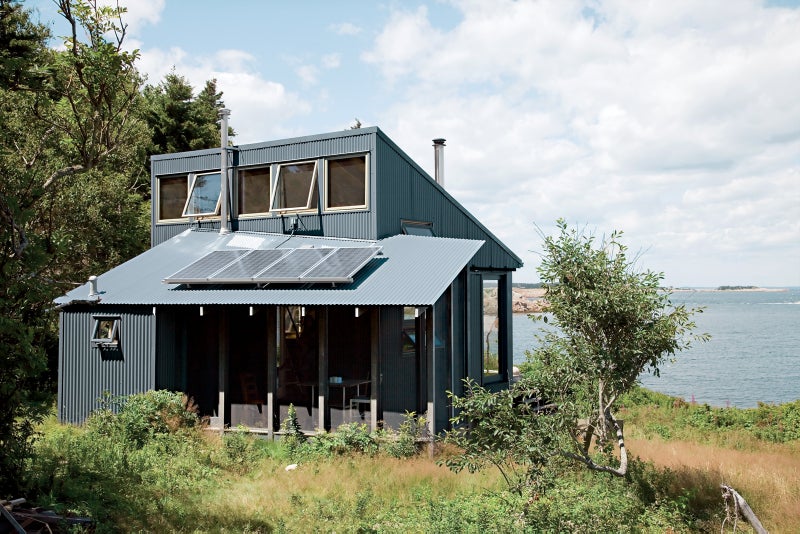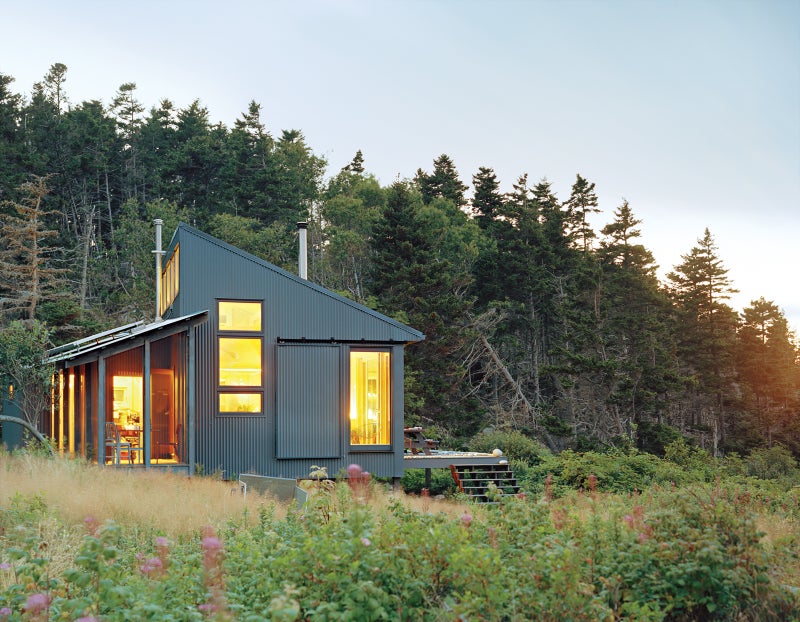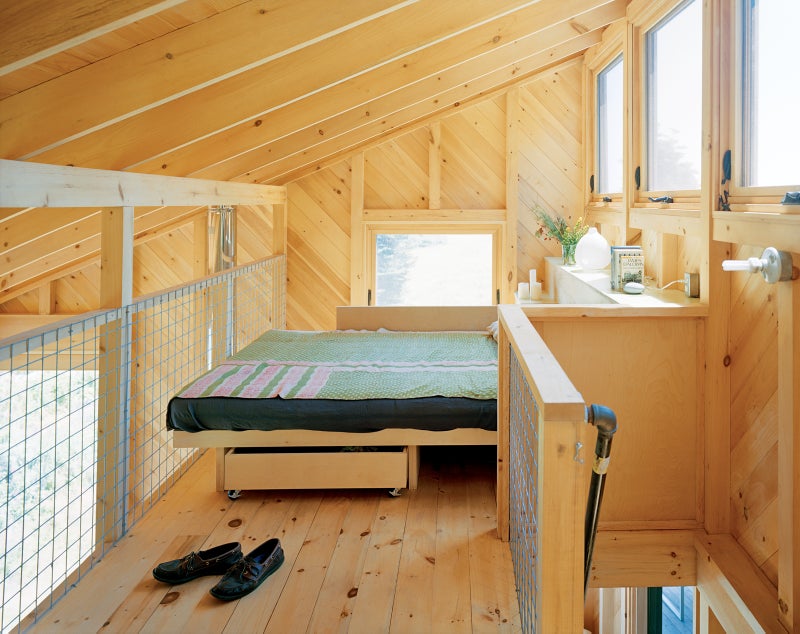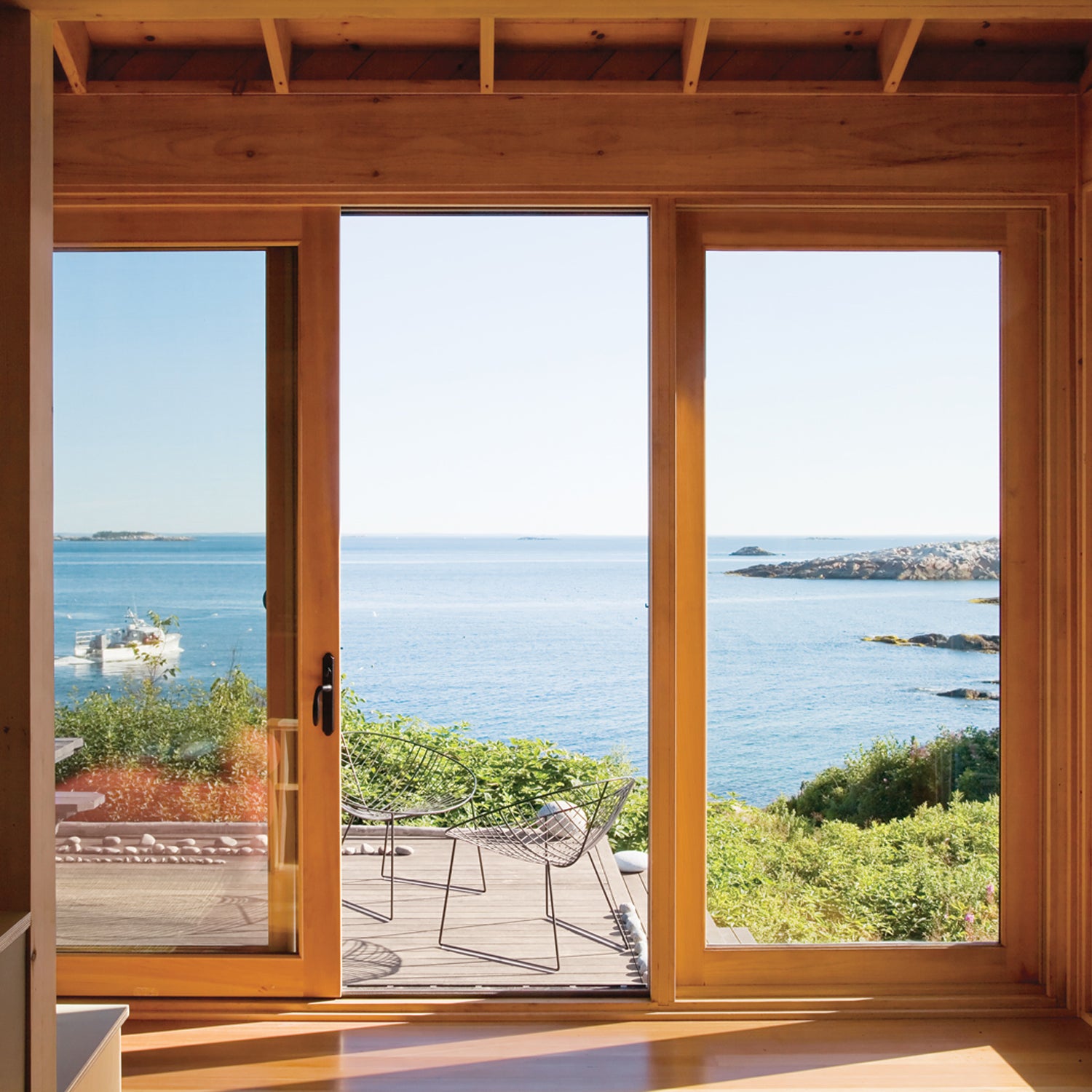How do you build an energy-efficient home on an island that’s 20 miles from civilization—and electricity? Let’s just say you’ll need some creativity, and a lot of time.
The owner pondered how to build this private home, located on a remote island off the coast of Maine, for 30 years. The first challenge? Establishing the boundaries of the three-quarter acre lot, which the locals call the “floating island.” Next, the team had to determine the perfect spot to lay the home’s foundation.

Take note: if you’re building in a remote area, you better follow energy-efficient best practices. This cabin’s design is deliberately compact and efficient. The island has no electricity, so only battery-operated power tools were an option during construction. Now, four solar panels power the lights and refrigerator, while the stove and water heater run on propane. The owners even collect rainwater for drinking and washing dishes.

Most of the materials for the home were gathered on the mainland, shipped to the building site on an amphibious truck, and then moved to the job site on a converted lawn mower. (Remember how we mentioned the need to be creative?)
When the cottage isn’t in use, the windows are covered with sliding metal panels to protect them against the often-ferocious weather. Smart storage units are concealed under the sofas, beds, and dining benches, while a sleeping loft is tucked under the single slope roof.



